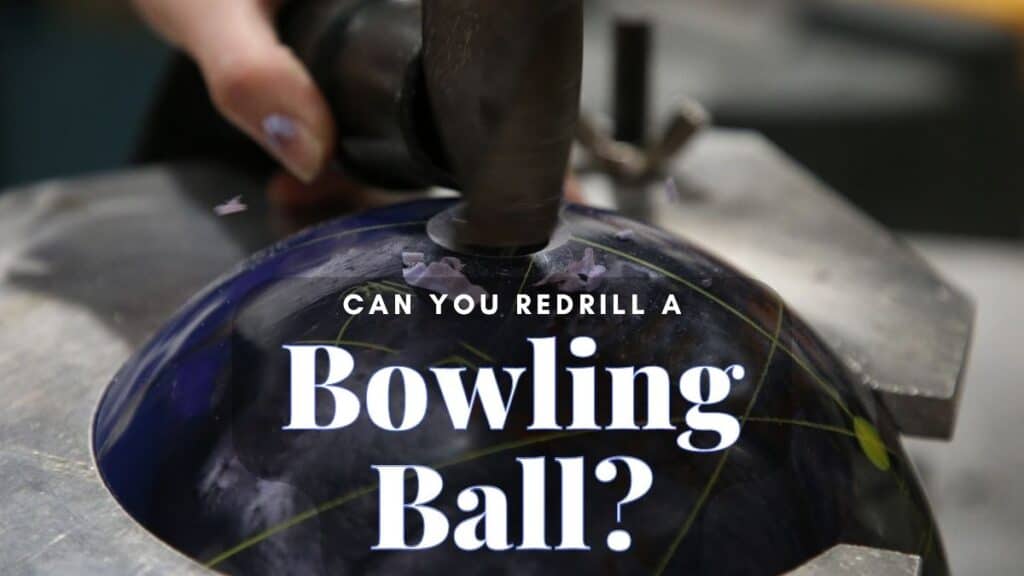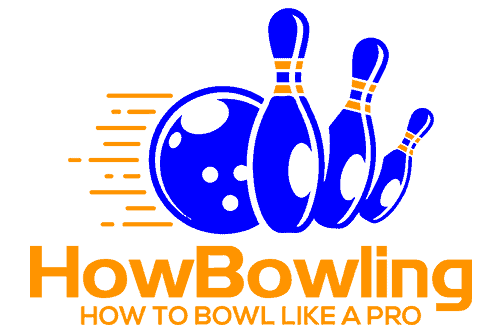Bowlers are really picky about their bowling balls when it comes to bowling, especially in amateur and professional leagues. That includes having a particular affinity for certain bowling balls. So, what do bowlers do when they find the perfect ball but the gripping holes are a little too large or a little too small?
The primary answer is to redrill the ball, but even though you can certainly redrill a bowling ball, it may not give you the result that you expect. You may find that your fingers fit the gripping holes, but the ball is no longer what you thought it was in the first place.
Don’t let that scare you, as redrilling bowling balls is a common practice. However, as with everything, there are risks involved. One thing is for certain, there are a limited number of times that you will be able to successfully redrill a bowling ball before it’s time to just get a new one.

How Does Redrilling a Bowling Ball Work?
When a bowling ball is manufactured, it is done in order of specifications, followed by drilling the holes. The manufacturing process ensures that the ball is exactly what it is supposed to be before the gripping holes are drilled out.
- First, the gripping holes are filled with an epoxy resin or similar material, depending on the type of bowling ball
- The bowling ball is then sanded down, back to its original smoothness and spherical shape
- New measurements are taken
- Hand configuration is marked on the ball
- One of the three-finger configurations is now drilled into the material
It’s a fairly simple process. It’s a DIY project for some bowlers. However, it takes a good deal of experience, tools, and knowledge to properly redrill a bowling ball. There are a lot of risks involved, and even a professional can botch the job if they’re not careful.
Pros and Cons of Redrilling a Bowling Ball
| Pros | Cons |
|---|---|
| Less expensive than buying a new bowling ball | Has the potential to cause cracking |
| Doesn’t alter performance when it’s done right | Can cause core damage |
| The result will better fit your style and preferred grip | Slightly lowers the weight |
The potential cons here are just that, potential. There’s a risk that you can damage the cover stock each and every time that the bowling ball is redrilled. While it’s certainly not the complex and convoluted process that precision cutting a diamond is, there is still a degree of skill necessary to drill the holes without causing any damage.
The cover stock on a bowling ball is the first section that the drilling bores through, and it can be made of Polyester, Urethane, or Reactive Resin. None of the three coverstocks is known for cracking during a redrilling. Still, there are instances of all three cracking during a redrilling.
The core is just as important, and if it’s compromised, much like the coverstock, the entire bowling ball will have to be replaced. There are Pancake-Type Cores, Symmetrical Cores, and Asymmetrical Cores, all of which play a role in a bowler’s preferences.
When drilling the gripping holes for the first time or redrilling them, the mass of the bowling ball changes and changes according to the type of core. Professionals will know and understand these subtle effects, and that’s why it’s important to let them do the work rather than trust in a YoutTube video before trying it yourself.
Over time, the mass changes in a bowling ball that have been redrilled numerous times might be enough to disqualify it in a tournament or a competition in which the weight and factors of the ball are measured and deemed appropriate or inappropriate.
Will Plugging and Redrilling a Bowling Ball Affect the Performance?
Eventually, there will be a noticeable difference in how the ball performs. You may not notice it at first, as your body adjusts to the subtle differences in play. However, as we mentioned above, the mass is affected to a tiny degree every time you drill into a ball.
When you drill and plug a ball over and over again, what was once subtle will become far more obvious. The coverstock will eventually weaken as well, so you should strongly consider getting a new bowling ball once you have redrilled yours several times.
This is especially true if the depth or the width of the holes are drilled even a millimeter larger or deeper than typical. It’s kind of like a job where absolute perfection and precision are required each and every time. Even then, changes in the ball’s performance are inevitable.
Can You Redrill a Bowling Ball Yourself?
Redrilling your bowling ball as a DIY project is not at all uncommon. However, you really need to be sure that you have the best tools for the job and that you know what you are doing going in. The best idea would be to redrill several old bowling balls or ones that you no longer use as a form of practice.
You also need to understand the subtle nuances of the bowling ball grip along with the three configurations that are used. If you play in a league and your balls are checked for validity, you don’t want to mess it up or drill something that would not be acceptable at the end of the day.
If you just want something for your own play, then feel free to experiment a little, with the understanding that the ball can be ruined. Once again, it would be a good time to practice with old bowling balls or balls that you no longer use for anything.
There are plenty of videos on YouTube with step-by-step instructions, one of which we linked to above. But a YouTube video isn’t a substitute for experience.
Check out our other article on Drilling Bowling Balls.
All Things Considered
You can certainly redrill a bowling ball, and you can do so multiple times if necessary. But you should also understand the potential consequences and the reality of subtle changes in how the ball performs, especially when it has been redrilled multiple times.




